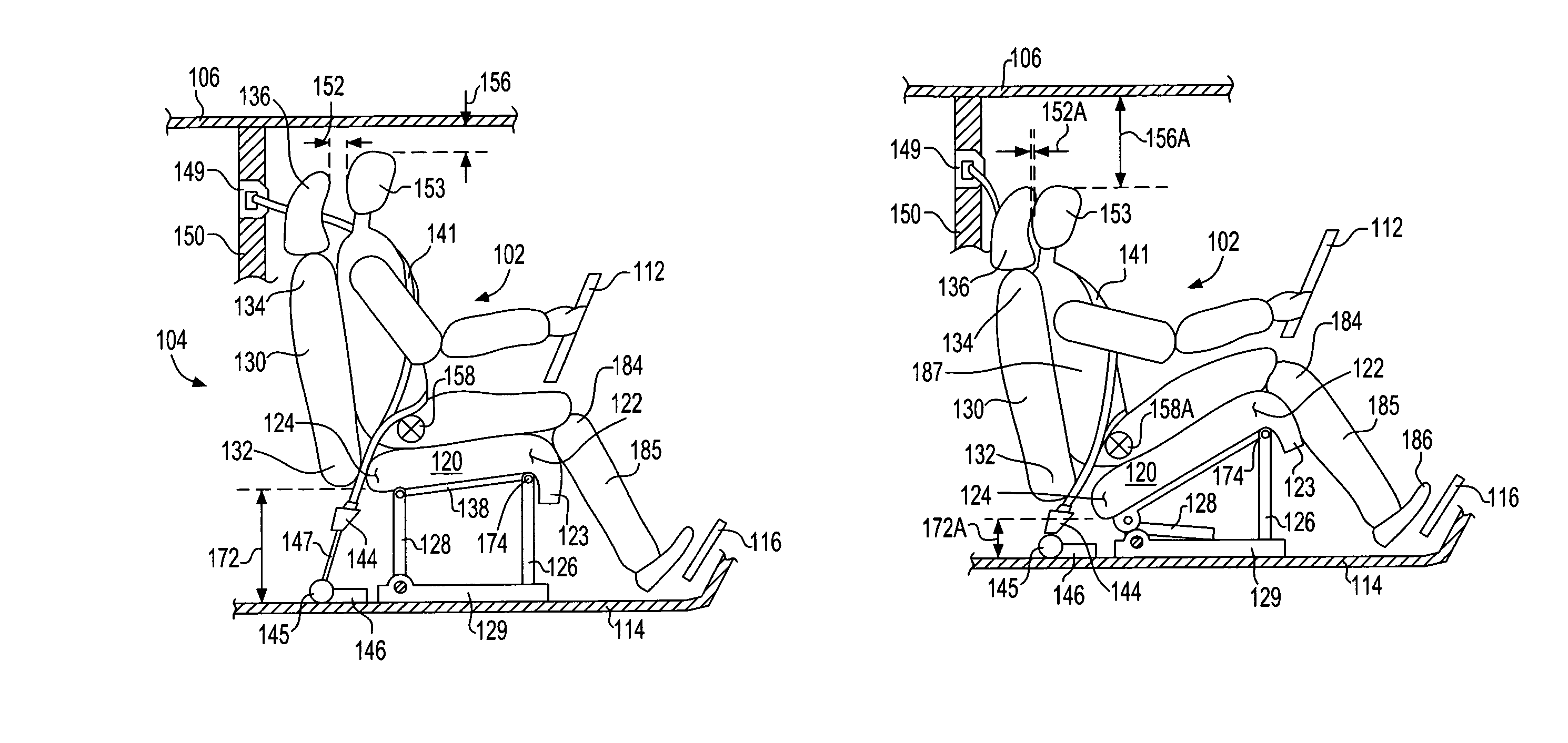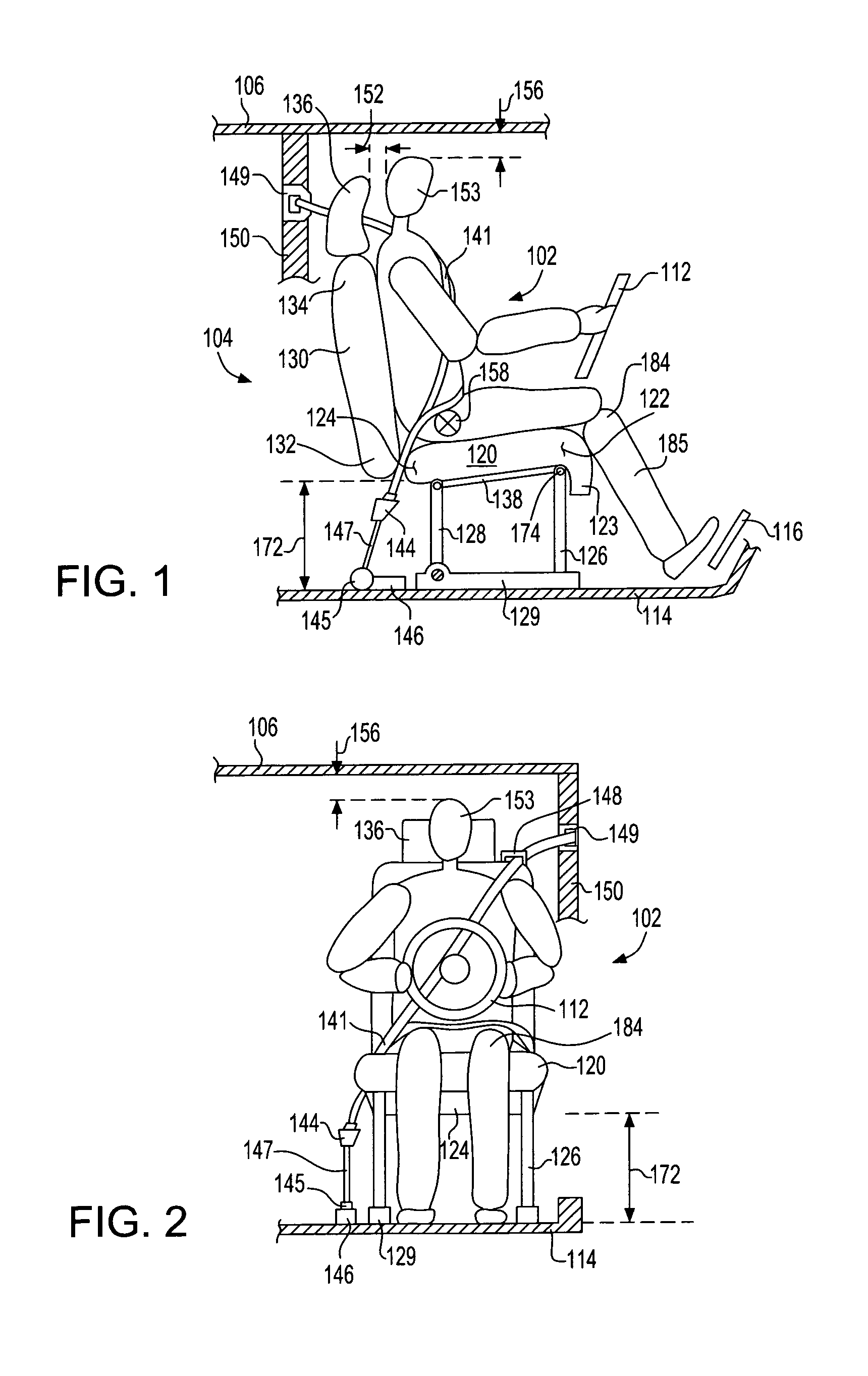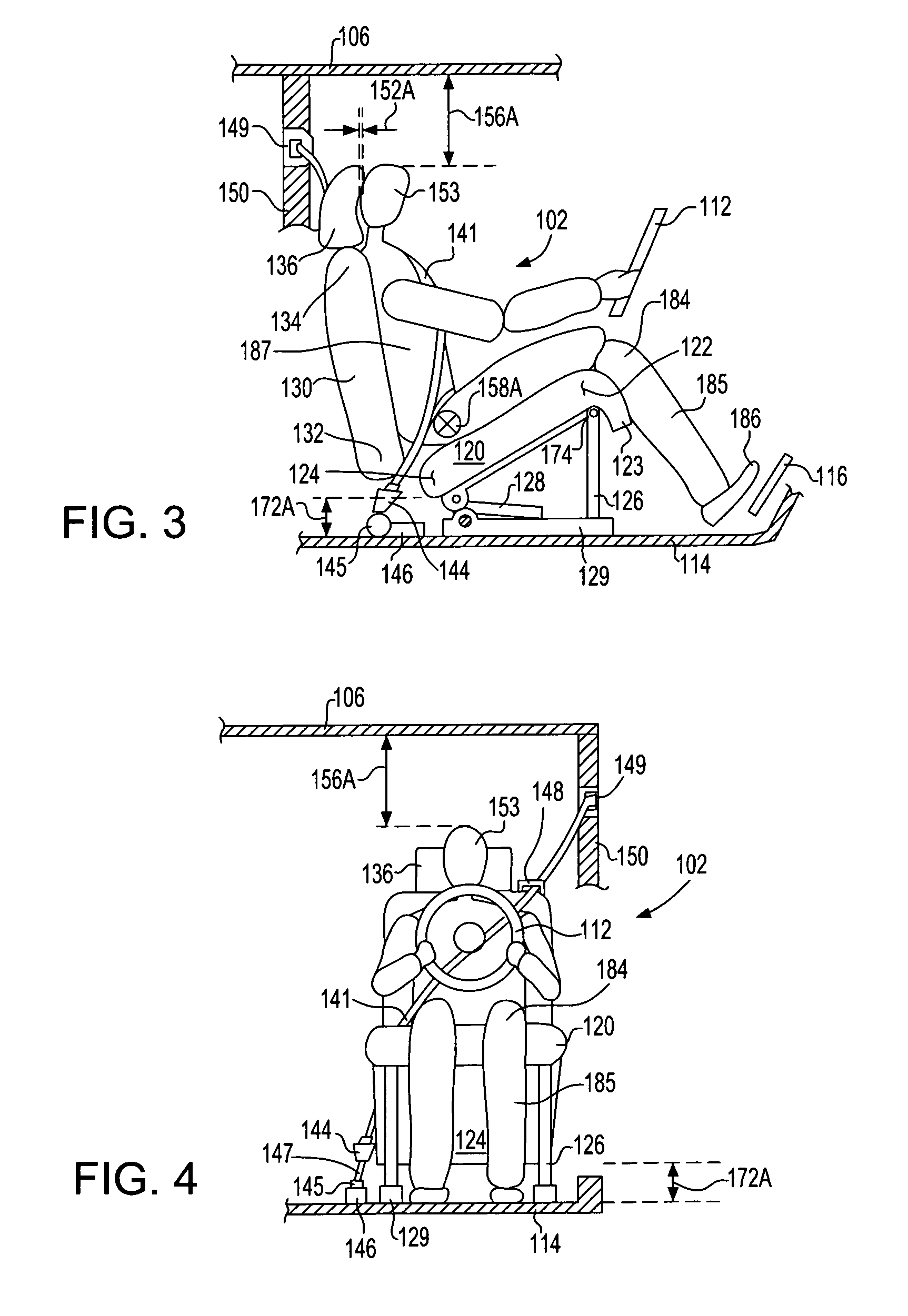Vehicle safety seat
a safety seat and seat technology, applied can solve the problems of undesirable pressure on the throat, neck or head of the occupant, and the death of millions of people in the field of vehicle safety seats, and achieve the effect of improving the safety of seat occupants
- Summary
- Abstract
- Description
- Claims
- Application Information
AI Technical Summary
Benefits of technology
Problems solved by technology
Method used
Image
Examples
example 1
[0148]A comparative sled test was conducted to compare the performance of a vehicle seat modified in accordance with the invention with the performance of a conventional (unmodified) automobile “stock” seat.
[0149]The seat-versus-seat (SVS) sled test was conducted at a test laboratory certified by the American Association for Laboratory Accreditation (A2LA). The test was performed substantially in accordance with Federal Motor Vehicle Safety Standard (FMVSS) 208 of the United States Department of Transportation. Comparative data was collected from a frontal sled test characterized by 90° frontal impact, pulse corridor of 16-18 G (g-force), and overall velocity change of 35 mph. To minimize differences between the sled test and a barrier crash test, the sled test was conducted with 10 cm pitch displacement.
[0150]Two identical commercially available automobile seats were procured. The seats were the same as those installed in coupe-class models produced by a top well-known auto maker. ...
PUM
 Login to View More
Login to View More Abstract
Description
Claims
Application Information
 Login to View More
Login to View More - R&D
- Intellectual Property
- Life Sciences
- Materials
- Tech Scout
- Unparalleled Data Quality
- Higher Quality Content
- 60% Fewer Hallucinations
Browse by: Latest US Patents, China's latest patents, Technical Efficacy Thesaurus, Application Domain, Technology Topic, Popular Technical Reports.
© 2025 PatSnap. All rights reserved.Legal|Privacy policy|Modern Slavery Act Transparency Statement|Sitemap|About US| Contact US: help@patsnap.com



